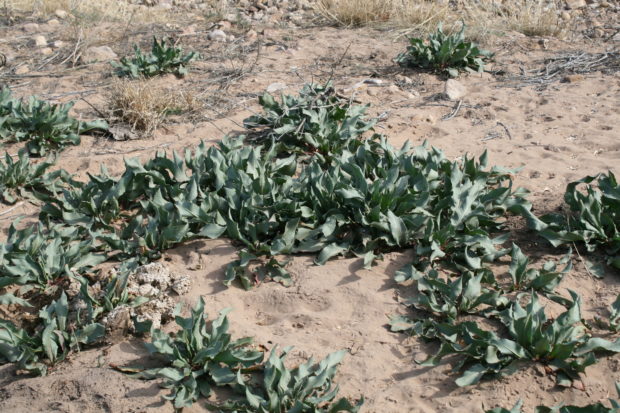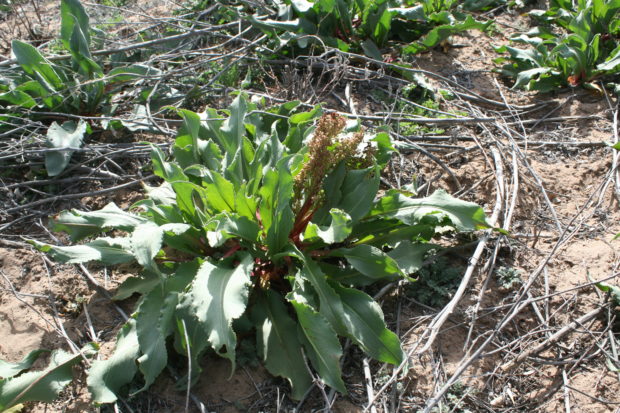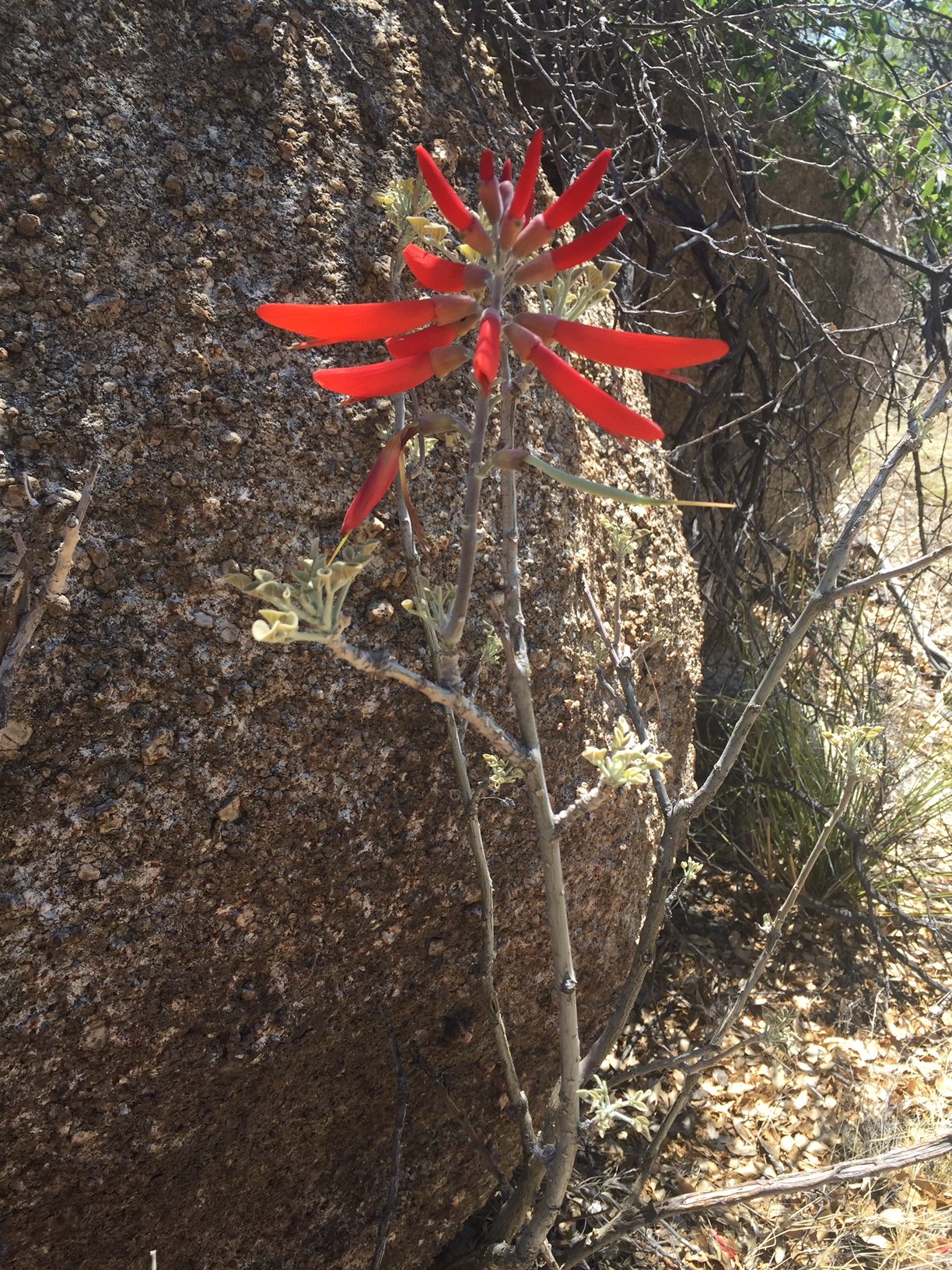Well, it was a cold winter, but as I sit and write this blurb it is 75 degrees outside with overnight lows in the low 30s. Now that is classic southern Arizona winter weather, though, I’m not fooled. At our little homestead we can get hard freezes well into April. One spring I grew hundreds of tomato plants to sell and every time I’d move them out of the greenhouse we would see a freeze coming and have to move them back in. I think we moved those tomatoes in and out three times before they got sold. So, I’m guessing I’ll be chopping wood a few more times this spring to warm up the house.
The lizards I mention that I rescued from a log I was chopping were ornate tree lizards (Urosaurus ornatus). I would be very surprised if you didn’t have any. They are quite common through out Arizona. I often catch them in our home before our kitties do.

The photo shows only a small part of a large population of Rumex on a sandy bank near us. They are just beginning to flower as you can see from the other photo. I’ve only read that all parts of Rumex hymenosepalus are edible…well not the roots.., but I guess it’s time I cooked some up to see for myself. Can’t wait to tell Ms. Mesquitey we’re having Rumex for dinner. The book I mentioned a little too quickly is Food Plants of the Sonoran Desert by Wendy Hodgson. If you are interested in edible or medicinal native plants, then it belongs on your shelf or on that pile by the bed. Oh, and that’s a photo of me by a huge dead emory oak…I have no idea why I’m gesturing…just having a good time I guess, and no, we couldn’t get that in the truck.


When I was making the “dried seed to collect for display” list for you I should have said “screwbean mesquite beans”, not “seed,” but...

Here are photos of some of the plants I was jabbering about: Desert willow (Chilopsis linearis), esperanza or Arizona yellow bells (Tecoma stans var....

The riparian woodland Ms. Mesquitey and I were hiking in is at around 6,000 ft. in elevation. I think that may be the upper...